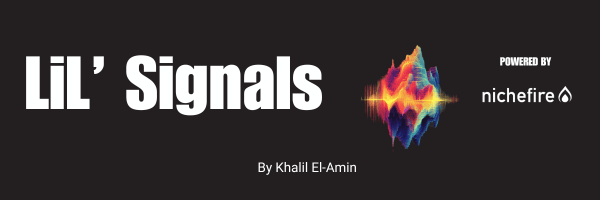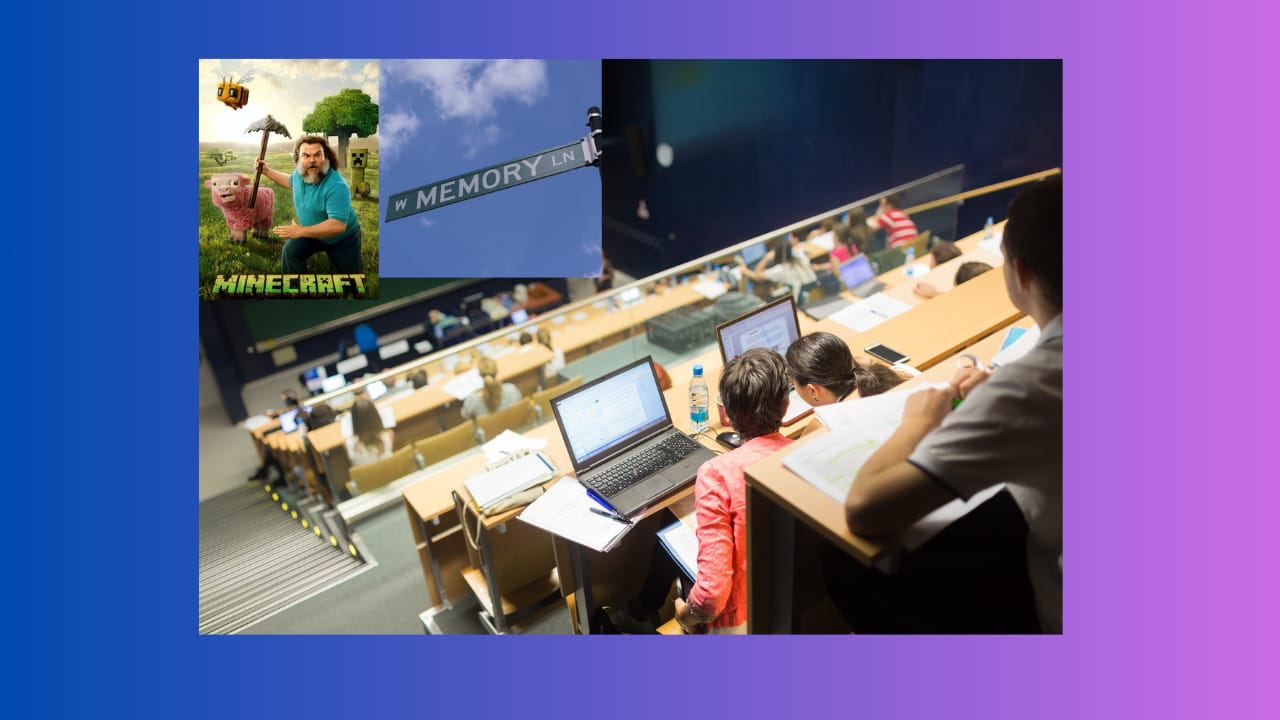- Lil' Signals
- Posts
- Lil’ Signals: What We Loved, What We Lost
Lil’ Signals: What We Loved, What We Lost
From Minecraft to McNuggets—How Memory and Mandates Are Reshaping What We Consume

👋🏽 Hey There
Lil’ Signals is your go-to newsletter for decoding the cultural currents shaping our world. Powered by Nichefire’s cutting-edge technology, we break down trends, tell compelling stories, and share actionable insights on how to tap into the power of cultural listening.
Stay ahead of the curve—one signal at a time.
In this edition, we’re diving into how nostalgia and regulation are converging to reshape consumer expectations—and product strategy. From the box office buzz of Minecraft to ingredient bans quietly rewriting food labels, two seemingly separate forces are revealing a shared truth: what we miss and what we can’t have are shaping what we crave next.
But this isn’t just about childhood memories or clean-label trends. It’s about how cultural memory and policy pressure are colliding—fueling demand for natural alternatives, cross-generational storytelling, and product innovation that speaks to both the past and the future.
In a moment when nostalgia is being remixed for new audiences and regulatory crackdowns are sparking sourcing shifts, marketers, strategists, and operators need to ask: What’s driving the sentiment behind the shelf?
That’s why in this week’s Cultural Listening 101, we’re mapping how bans are fueling demand—and how brands are leveraging nostalgia not as a gimmick, but as a growth engine. With insights surfaced through Firesearch, we’ll show how to spot the real signal: the rise of scalable, plant-based innovation rooted in emotion and necessity.
Because in 2025, it’s not just about what’s trending—it’s about what’s meaningful, what’s missing, and what’s next.
Let’s dive in!! 🎯
Table of Contents

StoryTime
Mining for Meaning—Nostalgia, Minecraft, and the Box Office Signal We Shouldn’t Ignore

If you told me back in 2012 that Minecraft would one day break box office records, I would’ve laughed, and then probably checked the battery life on my son’s Nintendo Switch.
Because while I never played the game growing up, my kids can’t seem to put it down.
That contrast, the disconnect between something I missed and something they’re obsessed with, might just be the most revealing cultural signal in this whole story.
Minecraft’s Movie opened with a staggering $313 million global box office debut, the biggest ever for a video game adaptation, even surpassing The Super Mario Bros. Movie.
That’s not just entertainment news, it’s a blinking red light for cultural strategists.
This isn’t about a movie.
It’s about the staying power of nostalgia, and more importantly, how brands are getting smarter about activating it across generations.
Let’s start with the game itself.
Minecraft was born from a weekend coding session in 2009 by Markus Persson, better known as “Notch.”
By 2011, it was a global phenomenon—an 8-bit sandbox where kids could build anything.
Unlike fast-paced shooters or open-world RPGs, Minecraft’s magic was in its simplicity.
It didn’t tell you what to do.
It gave you the tools to explore. It became, as The New York Times once called it, “the Lego of the internet generation.”
Come see what all the buzz is about over Spring Break and see #MinecraftMovie in theaters!
Get tickets now. fandan.co/MinecraftMovie— A Minecraft Movie (@AMinecraftMovie)
4:36 PM • Apr 12, 2025
And here we are, 16 years later, watching it morph into a box office titan, anchored by big names like Jack Black and Jason Momoa, and a storyline designed to hit that nostalgic nerve for Millennials and older Gen Z while onboarding a new generation through live-action absurdity.
But what really caught my eye was this stat: the film drew “five-quadrant” appeal, kids, teens, parents, and even non-gamers showed up.
That’s rare.
That’s cultural momentum.
It wasn’t just the nostalgia of the game that worked.
It was how they layered it in.
Nostalgia is a macro trend. Not a tactic. Not a gimmick.
A full-on, scalable cultural current.
And like any strong current, it has an undertow: fatigue.
If brands lean too hard into throwback aesthetics or references without anchoring them in today’s values and communities, they risk looking out of touch.
But when done well, when nostalgia is contextualized, it becomes a portal to shared meaning.
Take McDonald’s as another example.
This month, they rolled out a Minecraft-themed Happy Meal campaign.
It wasn’t just for kids.
Adults online were trading boxes like collector’s items, some buying meals just for the packaging.
That’s nostalgia working as connective tissue: a brand from your childhood partnering with a game your kids love.
Cross-generational relevance, unlocked.
In my own household, the signal became personal.
I’ve bought at least four versions of Minecraft, one for each kid’s console (because apparently “sharing” isn’t compatible with multiplayer mode).
My oldest builds fantasy towns.
My youngest just wants to chase pigs.
I watch them navigate these blocky worlds like I once navigated Mario levels.
That’s when it hit me: this isn’t a kids’ game.
It’s a cultural bridge. Nostalgia, reimagined.
But here’s the part brands and strategists need to hear loud and clear:
Nostalgia doesn’t work when it’s lazy.
It works when it’s layered.
So here’s my advice to anyone crafting campaigns, narratives, or content in 2025:
Don’t just pick a decade. Pick a moment that mattered then and still means something now.
Fuse the familiar with the fresh. Nostalgia is most effective when it’s re-contextualized, not just recycled.
Stay culturally grounded. Ask: Is this hitting because it’s nostalgic, or because it’s relevant?
The Minecraft movie might be polarizing for critics, but for culture, it’s a hit.
Not because it’s perfect.
But because it taps into something more powerful than pixels or plotlines: memory.
It’s not just a trip down memory lane, it’s a shared path forward.
And in a world where cultural signals are changing faster than ever, it’s worth remembering: sometimes the best insight into what’s next is hiding inside what we’ve already loved.
Let’s keep the conversation going.
Let’s explore the power of culture, one signal at a time.

Cultural Listening 101
Cultural Listening 101: When Bans Spark Demand
This week, we’re exploring a cultural shift hiding in plain sight: how regulatory bans can quietly shape the future of product innovation, especially in food, beverage, and sustainability-focused categories.
Lately, public discourse has zeroed in on ingredients long considered “normal” in packaged foods, like artificial dyes and fluoride. While it may sound like regulatory red tape, the signal is much deeper: cultural values around what we consume are changing fast.
Here’s the cultural insight worth listening to:
The trend isn’t what’s getting banned. The trend is what needs to replace it.
We used Nichefire’s Firesearch to map this shift. Starting with prompts like “food dye bans” and “dye alternatives,” we followed the cultural breadcrumbs and surfaced an emerging pattern: plant-based dye substitutes like turmeric, saffron, beetroot, hibiscus, and paprika are showing up more frequently in industry conversations.
These aren’t just wellness trends. They’re potential necessities; if certain synthetic ingredients are phased out, replacements will be required. And those who see it coming? They'll be first to market with tomorrow’s clean-label staples.
From Bans to Beets: A Cultural Opportunity
For businesses investing in sustainable innovation—from agtech to food science—this moment is bigger than just compliance. It’s a chance to lead.
Imagine being the team that identifies which crops have dual value as colorants and nutrition sources. That’s not just meeting consumer demand—it’s rewriting the ingredient supply chain.
This is the power of cultural listening: connecting policy and sentiment shifts with real-world product strategy.
Why It Matters for QSRs, CPGs & Retailers
For QSRs: Innovation doesn’t stop at flavor. If a fan-favorite sauce suddenly needs a label overhaul, reformulation isn’t just an R&D challenge; it’s a brand moment. Cultural insights help teams get ahead of that curve.
For CPGs: Natural ingredients are no longer fringe. Staying ahead of skepticism means investing early in plant-based substitutes that consumers and regulators can trust.
For Retailers: Today’s bans shape tomorrow’s shelves. Knowing which alternatives are rising gives you a competitive edge in sourcing, stocking, and storytelling.
How We Found It (Firesearch Flow)
Prompt: Food ingredient bans
Double-click: Artificial dye bans
Zoom in: Natural alternatives
Bridge: Cultural context + regulatory language
Outcome: Scalable, plant-based product signals
What starts as a regulatory headline becomes a roadmap for category innovation if you know how to listen for it.
TL;DR Signal:
What’s banned today becomes the business opportunity of tomorrow.
Cultural listening doesn’t just reveal trends—it helps you get there before they do.
Stay curious. Stay proactive. Stay ahead.
One signal at a time.
Reach out for a walkthrough and start making cultural listening work for you.
See you next week for another installment of Cultural Listening 101.
Thank you for subscribing to Lil’ Signals.
If you enjoyed this post or know someone who may find it useful, please share it with them and encourage them to subscribe: https://lilsignals.beehiiv.com/p/lil-signals-decoding-culture-one-insight-at-a-time?draft=true

Content Engines
I want to see what You can create!
Got a cool AI-generated video?
Creative Experiment?
A bold Idea?
Share it with us!
Reply to this email with your best creations, and let’s see who’s leading the AI content revolution. 📤✨

Top Cultural Trends
Stay Ahead with Nichefire
In this new section, we’re diving into Nichefire’s unique tools to explore the top cultural trends shaping our world.
This week, we break down key insights from the Movements Matrix, spotlighting high-growth and emerging trends across 47 cultural categories
Spot Emerging Trends: Discover niche opportunities before they hit the mainstream.
Actionable Insights: Leverage cultural data to make faster, smarter decisions.
Comprehensive View: Analyze trends across 47 pre-trained cultural categories.
Lil’ Surfing 🌊
Just interesting articles I find on “The Internets” 😜

💬 Your journey into the world of cultural insights starts here!
Thank you for being part of the Lil’ Signals community. Together, we’ll decode the world, one signal at a time.

Reply